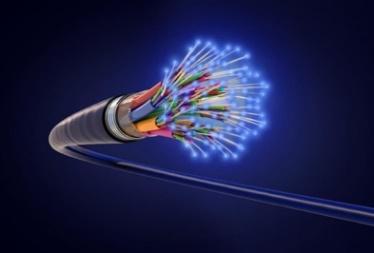
Dark Fiber vs. Lit Fiber Networks Pros and Cons
Prior to the 1970s, communication networks ran over copper wire. By the 1990s, however, with the internet taking off, it became clear that organizations would need a network medium that provided greater bandwidth and speed than copper. Today, a huge network of fiber-optic cables stretches across the globe, connecting us to each other – and the world.1
Many organizations have found themselves needing ever more bandwidth, reliability and low latency over greater distances due to requirements that include:
- More complex, feature-rich and data fueled applications
- Edge computing
- The Internet of Things (IoT)
- Media streaming and other broadband-dependent services that require moving massive volumes of data
Two Fiber Network Options: Lit and Dark
Most organizations run their networks today over “lit fiber,” a fiber-optic cable that is used and managed by an ISP to transmit data. Contracting for connectivity from an ISP provides an organization with a “plug and play” solution that includes installation, maintenance, network management and services. With lit fiber, an ISP provisions the organization with a specific amount of bandwidth, for which it charges a fixed monthly fee. Provisioning an organization is a matter of determining what the bandwidth should be.

The advantages? First, the company has the network required to run its business efficiently and meet customers’ expectations for high performance. Reliability is a huge advantage – ISPs are committed to (and typically offer service level agreements) ensuring minimal downtime and high quality of service (QoS). Another plus is that the company can focus its IT staff on revenue-generating projects and doesn’t have to invest in the IT gear needed to light, operate and maintain the network.
Dark Fiber Can Make Sense for Some Organizations
Dark fiber is excess network fiber that was installed by network providers but is not turned on, or “lit.” Cables are lying dormant, waiting for businesses to lease them and light them to run as their exclusive, private networks.
Some companies have particularly demanding requirements – unlimited dedicated bandwidth, direct, high-speed connectivity between their data centers or other sites, on-demand scalability or privacy and security that contracted ISPs can’t quite meet. At some point, the cost of lit fiber bandwidth services could exceed the cost of owning and operating a dark fiber-powered infrastructure. Such organizations – huge data-driven enterprises, for instance – may choose to implement a dark fiber network strategy.

In a dark fiber scenario, the organization acts as its own ISP. The business assumes all responsibility for purchasing, installing the equipment necessary to light the fiber at each end of the network, and for monitoring, managing and servicing all components of the network.
“Trends like cloud computing, edge computing, and the Internet of Things (IoT) are increasing enterprise connectivity needs. That’s driving a growing number of organizations to investigate dark fiber as an alternative to commercial Internet service.” 2
So, how should a business decide whether to go lit or dark?
Lit Fiber vs. Dark Fiber Considerations
Lit Fiber
Contracting with an ISP or other network service provider affords organizations the convenience of quickly and effortlessly establishing fast and reliable internet connectivity. At the same time, the organization can offload all network management and maintenance responsibilities to a third-party with the staffing expertise, demonstrated fiber networking capacity and capabilities and up and running network infrastructure that makes this a plug and play option.
Keep in mind that lit fiber contracts specify the amount of bandwidth that will be provided. Should the organization need to increase its network bandwidth, the network service provider likely will increase the organization’s cost for that added capacity. It’s also possible that the network service provider might not be able to deliver the amount of additional bandwidth an organization may need on short notice. Finally, because an organization’s lit fiber traffic is probably running on the same fiber optic cable or fiber strand with other organizations’ networks, there can be bandwidth contention problems that slow down network traffic or jeopardize QoS.
Dark Fiber
Dark fiber may be the way to go for an organization that needs virtually unlimited bandwidth and wants total control over the network. Using dark fiber, network latency essentially ceases to be a concern. Data security is significantly increased. Troubleshooting and issue resolution might take less time, because the organization does not have to rely on an ISP to dispatch a technician.
The downside of a dark fiber network is that the organization has to lease the fiber as well as buy, manage and maintain the equipment necessary to light and manage it. There is no ISP or network service provider to call when problems arise. Dark fiber networks cut out the middleman (i.e., the ISP or network service provider) but that means the organization needs to have in-house fiber optic network installation, management and operating expertise.
Making the Decision Between Lit and Dark
CoreSite network solutions architects and engineers can help you evaluate your network requirements in the context of your current and envisioned overall IT infrastructure in order to ensure you make the best possible decisions. Not only in terms of whether to choose lit or dark, but also to evaluate a fiber provider’s credentials and geographic reach, determine the most effective and cost-effective way to use fiber to connect multiple data centers (e.g., direct connects) and to provide information on other potential networking strategies that may be worth evaluating.
For more information on all of your networking requirements and answers to your questions, contact CoreSite here.








